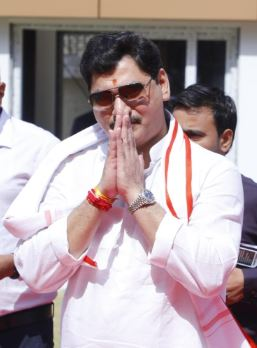
New Delhi, April 18 (IANS) In a remarkable development, the Shrimad Bhagavad Gita, a noted Hindu scripture and Natyashastra, an Indian treatise on performing arts have been included in UNESCO’s Memory of the World Register. Prime Minister Narendra Modi hailed the development as a proud moment for every Indian.
The news was shared by Union Minister of Culture and Tourism Gajendra Singh Shekhawat. He took to X and informed, “The Shrimad Bhagavad Gita & Bharat Muni’s Natyashastra are now inscribed in UNESCO’s Memory of the World Register.”
He also described it as a historic moment for Bharat’s civilisational heritage and added, “This global honour celebrates India’s eternal wisdom & artistic genius.”
He emphasized that these works are more than literary masterpieces — they are philosophical and aesthetic foundations that have profoundly influenced India’s worldview and modes of thought, emotion, expression, and living.
Prime Minister Narendra Modi described the development as ‘a proud moment for every Indian across the world’.
“The inclusion of the Gita and Natyashastra in UNESCO’s Memory of the World Register is a global recognition of our timeless wisdom and rich culture. The Gita and Natyashastra have nurtured civilisation and consciousness for centuries. Their insights continue to inspire the world,” he wrote in a post on X.
The UNESCO Memory of the World Register honours documentary heritage that is deemed to hold exceptional universal value. It includes texts, manuscripts, and documents that have significantly shaped human history and continue to influence generations.
With this addition, India now has 14 entries in the prestigious Memory of the World Register.
The Bhagavad Gita, a sacred dialogue between Lord Krishna and Arjuna on the battlefield of Kurukshetra, forms a part of the Mahabharata. Comprising 700 verses across 18 chapters, the text addresses profound philosophical questions, encouraging action, selflessness, and devotion. It synthesises key elements from Vedic, Buddhist, Jain, and Carvaka traditions, making it a cornerstone of India’s intellectual and spiritual heritage. The Gita has been studied and translated across the globe for centuries.
The Natyashastra, attributed to the sage Bharat Muni, is the foundational treatise on Indian performing arts, encompassing theatre, dance, and music. It has shaped classical art traditions across centuries and remains a guiding text for artists and scholars alike.
–IANS
jk/mr






